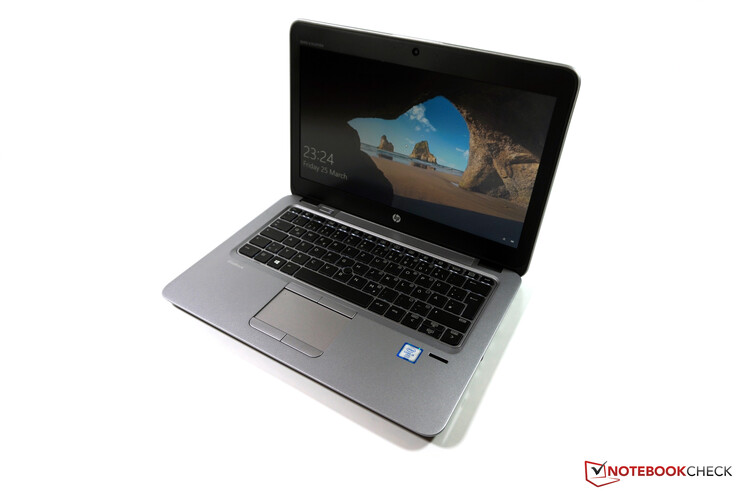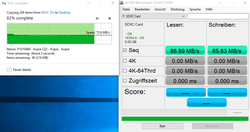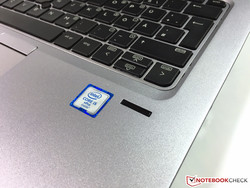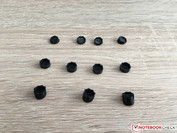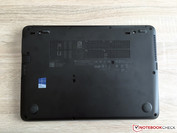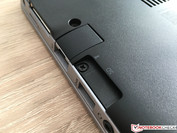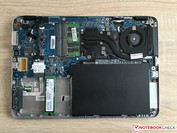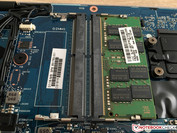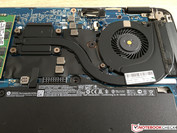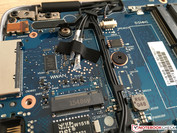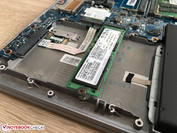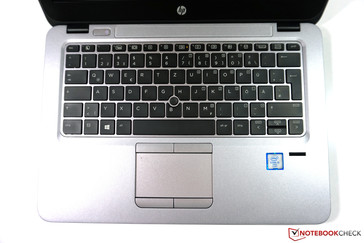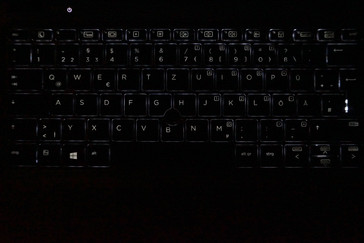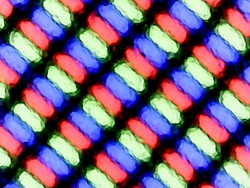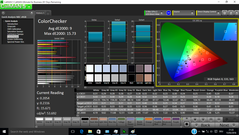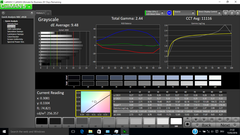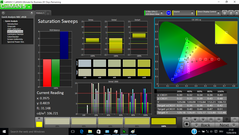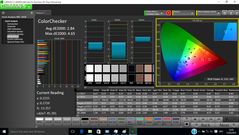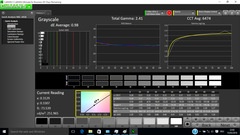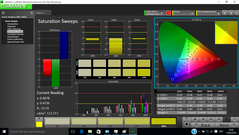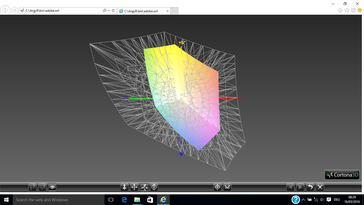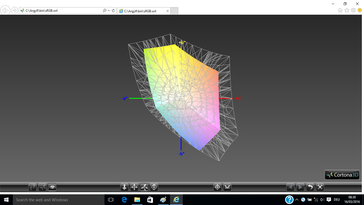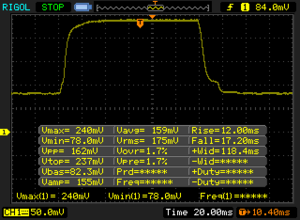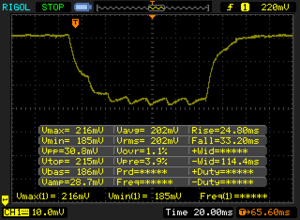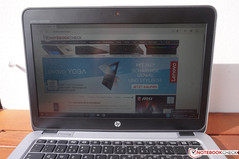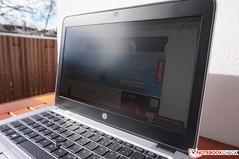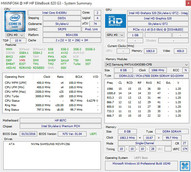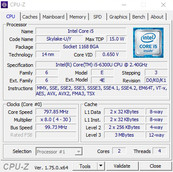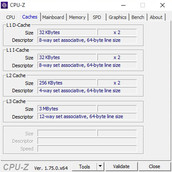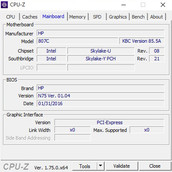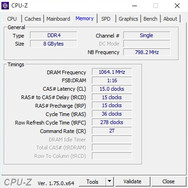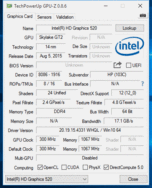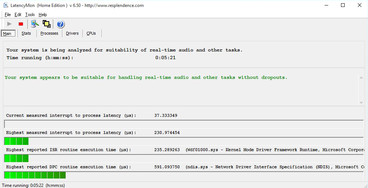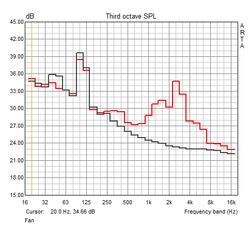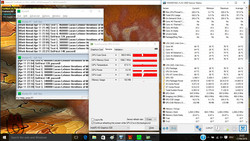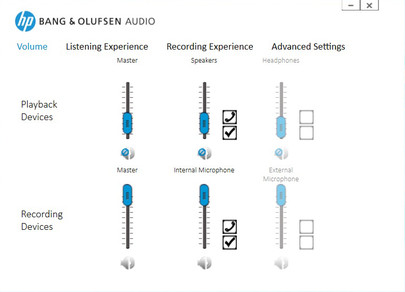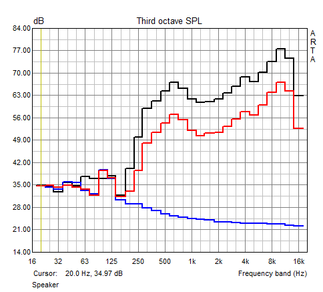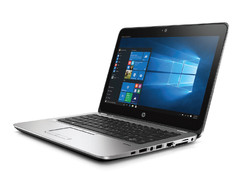HP EliteBook 820 G3 Subnotebook Review

For the original German review, see here.
Even though thin Ultrabooks are becoming more popular, there are still compact subnotebooks for productive usage scenarios. Our review unit today, the HP EliteBook 820 G3, belongs to this category. It is compact with its 12.5-inch screen but still comes with all important business ports and security features. At the same time it waives components like a touchscreen, which are not that important for business devices and are only optional for some configurations.
EliteBooks are premium devices from HP, which also shows in the pricing. The EliteBook 820 G3 currently starts at 1,259 Euros (~$1423); our review model with the designation T9X43ET retails for 1,659 Euros (~$1875). In return, you get a powerful device with a Core i5 processor and fast NVMe-SSD, but the display surprises us. Similar to the base model, our version only sports a TN display with the low HD resolution (1366x768 pixels), which does not really suit the high price. A Full HD IPS panel is currently only available in combination with a Core i7 CPU (~1,730 Euros, ~$1955).
Rivals for the EliteBook are the Lenovo ThinkPad X260, Dell Latitude E7270 and the Toshiba Portégé Z30. We could not yet review the Skylake model of the Dell Latitude, so we will use the older Latitude E7250 for comparison purposes.
Case
HP slightly reworked the chassis of the EliteBook 820 G3 compared to the predecessor. Probably the most noticeable change is the silver-colored lid (previously black). The chassis is slightly thinner (18.9 vs. 21 mm) and a bit lighter. At just 1.28 kg, the EliteBook 820 G3 is one of the lightest mobile companions. This does not affect the base unit though, because the magnesium alloy ensures high stability. Only unrealistically high pressure will slightly warp the area of the palm rest, which will also cause minor creaking.
The thin lid, as expected, cannot quite keep up in terms of stability, even though the performance is still pretty decent. Pressure from behind does not cause picture distortions and the resistance against twisting attempts is also good. We can, however, notice some creaking in this case. We really liked the two hinges. They are very smooth and you can open the lid with one hand, but they are also taut enough to keep the display well in position. The maximum opening angle is around 140 degrees.
The silver chassis leaves a very appealing visual design, and both the black keyboard and the black display frame create a nice contrast. Only the black bottom cover falls slightly behind in terms of tactile feeling, although it is made of magnesium. A nice detail is the four status LEDs at the left front. All in all, the design is pretty good and can meet the premium expectations.
The battery is inside the case and cannot be replaced from the outside. You can remove the whole bottom cover for maintenance; we will have a closer look at the procedure in the corresponding section.
Connectivity
One advantage of the slightly thicker base unit compared to some Ultrabooks is certainly the comprehensive port variety. HP uses the available space at both sides very well and implements three USB ports (1x Type-C), DisplayPort, VGA as well as an Ethernet port. You also get a SmartCard reader. Despite the large number of ports, the layout is pretty convenient and the spacing between the individual ports is also sufficient, only extremely wide USB thumb drives could be an issue. We measured up to 212 MB/s at the USB 3.0 port in combination with our external Samsung SSD (SSD 830 64 GB) – a decent result.
We also check the performance of the SD-card reader with our reference card from Toshiba (Exceria Pro 64 GB UHS-II, up to 260 MB/s). The transfer rates are average, because we can measure 86 and 65 MB/s (read/write) when we copy large files. You can expect around 73 MB/s when you copy typical JPG pictures (~5 MB each).
Communication
The two network modules I219-LM (Gigabit Ethernet) and Wireless-AC 8260 are provided by Intel and are currently used in many business notebooks. The dual-band Wi-Fi module (2x2) supports the fast 802.11 ac standard in 2.4 and 5 GHz networks as well as Bluetooth 4.2. The theoretical maximum transfer rate is 867 Mbps, and we can measure around 82 MB/s (802.11 n: ~11 MB/s) under optimal conditions (around 1 meter away from the router Asus RT-AC56U) – an excellent result.
An LTE modem is optional and the necessary antennas are already integrated. The SIM-slot is conveniently placed at the right side of the case and can be accessed very quickly and comfortably.
The HD webcam as well as the dual-array microphone are located in the upper display frame. The latter records voices very clearly, but the webcam is rather disappointing, even though this is the case for pretty much every modern notebook. It still does its job and is sufficient for video conferences.
Security
Being a real business notebook, HP obviously equipped the EliteBook 820 G3 with many security features. All important functions are available (TPM, SmartCard reader, BIOS passwords, Kensington lock etc.) and you also get a fingerprint scanner, but the corresponding Security Manager was not available after the Windows 10 update (review unit was shipped with Windows 7 Professional), so we could not use the scanner right away. There were no problems after the installation from the HP website.
Accessories
The box of the EliteBook 820 G3 only includes the usual accessories like the power adapter and some brochures. HP also offers many generic articles and also a docking station. The model UltraSlim (product number D9Y32AA) is from 2013, so you can still use pre-existing models. It costs around 160 Euros (~$180) and is an easy way to integrate the notebook into your working environment.
Maintenance
HP waives maintenance hatches, but you can remove the whole bottom cover in return. There are small and differently-sized rubber covers on top of the Philips screws, so you should remember their position. A bit inconvenient is the screw at the SD-card reader, which is covered by the dummy module. After the removal of the bottom cover, you can access all the important components including the free RAM slot. One issue is the position of the M.2-SSD across the 2.5-inch slot. It is right on the height of the 2.5-inch connector, so you cannot combine both drives – either 2.5-inch or M.2.
Warranty
The standard warranty period is 3 years including Pickup & Return service. HP does offer optional Carepacks to extend the scope and duration of the service. An upgrade to 5 years with On-site service, for example, retails for around 350 Euros (~$395).
Input Devices
Keyboard
HP equips the EliteBook 820 G3 with a spill-water resistant chiclet keyboard with a white background illumination. It can be adjusted in two levels and is automatically deactivated when you do not type for a while, which can be changed in the BIOS. We get a good keyboard with sufficient travel when you consider the compact size of the notebook. The feedback is good and we can just slightly warp the input device when we push really hard. The vertical arrow keys are once again unfortunately pretty small and it is tricky to use them. Contrary to the predecessor and the other EliteBooks (840, 850), we do not get dedicated buttons for the speakers as well as the wireless connections this time, so you have to use Fn combinations instead.
Touchpad & PointStick
HP implements a normal touchpad with dedicated mouse buttons. The size is not very generous at just 8.1 x 4.7 cm, so there is not much space for multi-touch gestures (up to 3 fingers). Unfortunately, there is no driver for the Synaptics pad after the Windows 10 update, so you are limited to the common Windows settings. There is no criticism for the precision or the gliding capabilities. Handy: You can activate/deactivate the pad with a double tap on the upper left corner, and the status is indicated by an LED. We were less convinced by the two clattery mouse buttons underneath the touchpad, but they still triggered reliably.
There is also a PointStick for cursor movements. The handling is certainly a matter of taste, but we are once again disappointed by the buttons. The left one in particular left a very spongy impression and especially double clicks are not always executed reliably – annoying in practice.
Display
HP offers three different 12.5-inch displays for the EliteBook 820 G3. You can choose between a matte HD panel, a matte Full HD panel or an FHD touchscreen. Our review unit uses the HD panel (1366x768 pixels), which – contrary to the two FHD versions – is unfortunately only based on the TN technology. We do not really know why the manufacturer equips a notebook for more than 1,600 Euros (~$1806) with such a panel.
The situation does not really improve in our measurements. The average brightness is still okay at almost 240 cd/m², but the contrast is very low at 407:1 due to the high black value (0.6 cd/m²). It is therefore the worst panel in our comparison group, and it is subjectively not very convincing, either. Dark areas are gray and colors pale. The only two advantages of the panel are the lack of backlight bleeding and PWM flickering.
The matte Full HD IPS panel, which we reviewed in the predecessor EliteBook 820 G2, is clearly superior in all measurements (see comparison table).
| |||||||||||||||||||||||||
Brightness Distribution: 84 %
Center on Battery: 243 cd/m²
Contrast: 407:1 (Black: 0.6 cd/m²)
ΔE ColorChecker Calman: 9 | ∀{0.5-29.43 Ø4.77}
ΔE Greyscale Calman: 9.48 | ∀{0.09-98 Ø5}
58.63% sRGB (Argyll 1.6.3 3D)
37.18% AdobeRGB 1998 (Argyll 1.6.3 3D)
40.2% AdobeRGB 1998 (Argyll 3D)
58.5% sRGB (Argyll 3D)
38.9% Display P3 (Argyll 3D)
Gamma: 2.44
CCT: 11116 K
| HP EliteBook 820 G3 1366x768, TN LED | Lenovo ThinkPad X260-20F60041GE 1366x768, IPS | Toshiba Portege Z30-C-138 1920x1080, IPS | Dell Latitude 12 E7250 1920x1080, TN-LED | HP Elitebook 820 G2-J8R58EA 1920x1080, IPS | |
|---|---|---|---|---|---|
| Display | 24% | 72% | 14% | 12% | |
| Display P3 Coverage (%) | 38.9 | 48.19 24% | 67.9 75% | 44.48 14% | 43.72 12% |
| sRGB Coverage (%) | 58.5 | 72.6 24% | 98 68% | 66.2 13% | 65.3 12% |
| AdobeRGB 1998 Coverage (%) | 40.2 | 49.79 24% | 69.8 74% | 45.96 14% | 45.24 13% |
| Response Times | 17% | 16% | |||
| Response Time Grey 50% / Grey 80% * (ms) | 58 ? | 42.8 ? 26% | 42 ? 28% | ||
| Response Time Black / White * (ms) | 29.2 ? | 27.2 ? 7% | 28 ? 4% | ||
| PWM Frequency (Hz) | 220 ? | 217 ? | |||
| Screen | 48% | 48% | 34% | 41% | |
| Brightness middle (cd/m²) | 244 | 262 7% | 300 23% | 360 48% | 300 23% |
| Brightness (cd/m²) | 240 | 251 5% | 280 17% | 330 38% | 298 24% |
| Brightness Distribution (%) | 84 | 88 5% | 87 4% | 81 -4% | 83 -1% |
| Black Level * (cd/m²) | 0.6 | 0.26 57% | 0.31 48% | 0.53 12% | 0.33 45% |
| Contrast (:1) | 407 | 1008 148% | 968 138% | 679 67% | 909 123% |
| Colorchecker dE 2000 * | 9 | 3.55 61% | 4.9 46% | 5.58 38% | 3.68 59% |
| Colorchecker dE 2000 max. * | 15.73 | 5.85 63% | 8.91 43% | ||
| Greyscale dE 2000 * | 9.48 | 3.36 65% | 6.69 29% | 3.98 58% | 2.47 74% |
| Gamma | 2.44 90% | 2.39 92% | 2.33 94% | 2.21 100% | 2.4 92% |
| CCT | 11116 58% | 5985 109% | 6487 100% | 6192 105% | 6310 103% |
| Color Space (Percent of AdobeRGB 1998) (%) | 37.18 | 45.9 23% | 63 69% | 42.2 14% | 41.6 12% |
| Color Space (Percent of sRGB) (%) | 58.63 | 98 67% | 64.9 11% | ||
| Total Average (Program / Settings) | 30% /
39% | 45% /
49% | 24% /
28% | 27% /
34% |
* ... smaller is better
Our measurements with a spectrophotometer and the professional software CalMAN support the bad subjective impression. The color temperature is way too cool at more than 11,000 K ex-works and you can easily see the strong blue cast. The average DeltaE-2000 deviations for the colors and the grayscale should be smaller than 3 if possible, but this value is clearly missed by our panel with 9 and 9.48. The colors even show some outliers with values close to 15. You should definitely calibrate the panel or at least use our linked profile (see box). The grayscale performance in particular will benefit from calibration, where the average DeltaE-2000 deviation drops to an excellent 0.98 and the blue cast can be removed. The average value for the colors also drops below 3 (2.84), but there are still some smaller outliers. The color-space coverage at just 58% sRGB and 37% AdobeRGB is pretty bad. This means the display is not suited for (semi) professional picture editing, even after calibration.
Display Response Times
| ↔ Response Time Black to White | ||
|---|---|---|
| 29.2 ms ... rise ↗ and fall ↘ combined | ↗ 12 ms rise | |
| ↘ 17.2 ms fall | ||
| The screen shows relatively slow response rates in our tests and may be too slow for gamers. In comparison, all tested devices range from 0.1 (minimum) to 240 (maximum) ms. » 77 % of all devices are better. This means that the measured response time is worse than the average of all tested devices (20.2 ms). | ||
| ↔ Response Time 50% Grey to 80% Grey | ||
| 58 ms ... rise ↗ and fall ↘ combined | ↗ 24.8 ms rise | |
| ↘ 33.2 ms fall | ||
| The screen shows slow response rates in our tests and will be unsatisfactory for gamers. In comparison, all tested devices range from 0.165 (minimum) to 636 (maximum) ms. » 94 % of all devices are better. This means that the measured response time is worse than the average of all tested devices (31.6 ms). | ||
Screen Flickering / PWM (Pulse-Width Modulation)
| Screen flickering / PWM not detected | ||
In comparison: 53 % of all tested devices do not use PWM to dim the display. If PWM was detected, an average of 8091 (minimum: 5 - maximum: 343500) Hz was measured. | ||
Thanks to the matte panel surface, the outdoor capabilities of the EliteBook 820 G3 are decent, but we would have preferred a more powerful background illumination in bright environments. You can still see the display content under sunlight, but it is not really comfortable. Typically for a TN panel are the limited viewing angles. You basically only get a decent picture from a central viewing position; the picture will otherwise quickly brighten up and colors will invert. It is therefore tricky to look at the display with multiple people.
Performance
As expected for the small dimensions, HP uses frugal ULV hardware from Intel for the EliteBook 820 G3. It will provide sufficient performance for all common office applications and smooth handling, especially in combination with an SSD. Our review unit for almost 1,650 Euros (~$1863) uses a Core i5 processor, an extremely fast NVMe-SSD as well as 8 GB memory.
Processor
The heart of our review unit is an Intel Core i5-6300U. This dual-core processor can reach up to 3 GHz (2.9 GHz for two cores) thanks to Turbo Boost and can execute up to four threads simultaneously via Hyper-Threading. The TDP of this CPU is 15 Watts. It can maintain the specified Turbo Boost under maximum load, so the benchmark results are very good.
The processor is on par with the old Broadwell chip i7-5500U in Cinebench R15 Single but can beat it in the Multi test (+8%). The advantage over the very popular i5-6200U is between 7-9%, so the 6300U does not really pay off when you are only looking at the performance. The i5-6300U does, however, support vPro, which is certainly interesting for the target group. The faster Core i7 chips will hardly be worth the premium in the 820 G3, because they will probably be limited by the TDP in multi-core scenarios.
The performance drops by 17% (Single) and 33% (Multi) on battery power, because the Turbo Boost is deactivated by default in this case. You can change this behavior with the BIOS option "Enable Turbo Boost on DC". More benchmarks with the i5-6300U are available in our Tech section.
System Performance
The subjective system performance is excellent. Both Windows 10 as well as applications launch instantaneously and there are virtually no delays. The fast NVMe-SSD from Samsung plays its part in PCMark 8, which reflects the subjective impression. Our review unit is always on top of the comparison group.
| PCMark 8 Home Score Accelerated v2 | 3400 points | |
| PCMark 8 Creative Score Accelerated v2 | 3845 points | |
| PCMark 8 Work Score Accelerated v2 | 4581 points | |
Help | ||
| PCMark 8 | |
| Home Score Accelerated v2 (sort by value) | |
| HP EliteBook 820 G3 | |
| Lenovo ThinkPad X260-20F60041GE | |
| Toshiba Portege Z30-C-138 | |
| Dell Latitude 12 E7250 | |
| HP Elitebook 820 G2-J8R58EA | |
| Creative Score Accelerated v2 (sort by value) | |
| HP EliteBook 820 G3 | |
| Lenovo ThinkPad X260-20F60041GE | |
| Dell Latitude 12 E7250 | |
| HP Elitebook 820 G2-J8R58EA | |
| Work Score Accelerated v2 (sort by value) | |
| HP EliteBook 820 G3 | |
| Lenovo ThinkPad X260-20F60041GE | |
| HP Elitebook 820 G2-J8R58EA | |
Storage Devices
There are several hard drives for the EliteBook, both with the 2.5-inch as well as the M.2 form factors. Our review unit is equipped with an M.2 NVMe-SSD from Samsung (SM951) with a total capacity of 256 GB. Our comparison table clearly shows the advantages over the SATA-III interface, because the transfer rates are not limited at around 500-550 MB/s. We had problems with the benchmarks at first, but this is not uncommon for NVMe-SSDs. The installation of the corresponding driver from Samsung helped, but the results between CrystalDiskMark (seq. transfer rates ~1250 MB/s) and AS SSD (seq. read ~1600 MB/s, seq. write ~720 MB/s) are quite different. We can say one thing for sure: The NVMe-SSD is much faster than the hard drives of the rivals, even though you will hardly notice this big difference between the individual SSDs in practice. More comparisons are possible in our comprehensive SSD/HDD list.
| HP EliteBook 820 G3 Samsung SM951 MZVPV256HDGL m.2 PCI-e | Lenovo ThinkPad X260-20F60041GE Seagate ST500LM000 Solid State Hybrid Drive | Toshiba Portege Z30-C-138 Toshiba HG6 THNSNJ512G8NY | Dell Latitude 12 E7250 Samsung PM851 Series MZMTE256HMHP | HP Elitebook 820 G2-J8R58EA Samsung SSD PM851 256 GB MZ7TE256HMHP | |
|---|---|---|---|---|---|
| CrystalDiskMark 3.0 | -96% | -55% | -60% | -45% | |
| Write 4k QD32 (MB/s) | 343.9 | 0.766 -100% | 174.7 -49% | 180 -48% | 266.5 -23% |
| Read 4k QD32 (MB/s) | 549 | 1.155 -100% | 227.3 -59% | 214 -61% | 384.3 -30% |
| Write 4k (MB/s) | 134.1 | 3.136 -98% | 86.3 -36% | 61 -55% | 136.4 2% |
| Read 4k (MB/s) | 51 | 0.497 -99% | 21.17 -58% | 29 -43% | 29.14 -43% |
| Write 512 (MB/s) | 811 | 77.1 -90% | 379.9 -53% | 244 -70% | 268.1 -67% |
| Read 512 (MB/s) | 1131 | 36.26 -97% | 414.8 -63% | 428 -62% | 445.6 -61% |
| Write Seq (MB/s) | 1240 | 110.2 -91% | 423.3 -66% | 244 -80% | 268.3 -78% |
| Read Seq (MB/s) | 1255 | 107.9 -91% | 518 -59% | 509 -59% | 523 -58% |
GPU Performance
Graphics are handled by the integrated Intel HD Graphics 520 of the processor. We reviewed this chip a couple of times before, so we will just cover the important specs; more technical information is available here. Combined with the Core i5-6300U, the GPU can reach a maximum core clock of 1000 MHz.
The GPU is on the expected level in the 3DMarks, but it cannot utilize its full potential due to the single-channel memory configuration. The performance is about 6% lower on battery power. More benchmarks with the HD Graphics 520 are available in our Tech section.
| 3DMark 11 Performance | 1408 points | |
| 3DMark Cloud Gate Standard Score | 5164 points | |
| 3DMark Fire Strike Score | 711 points | |
Help | ||
| 3DMark | |
| 1280x720 Cloud Gate Standard Score (sort by value) | |
| HP EliteBook 820 G3 | |
| Lenovo ThinkPad X260-20F60041GE | |
| Dell Latitude 12 E7250 | |
| HP Elitebook 820 G2-J8R58EA | |
| 1280x720 Cloud Gate Standard Graphics (sort by value) | |
| HP EliteBook 820 G3 | |
| Lenovo ThinkPad X260-20F60041GE | |
| Dell Latitude 12 E7250 | |
| HP Elitebook 820 G2-J8R58EA | |
| 1920x1080 Fire Strike Score (sort by value) | |
| HP EliteBook 820 G3 | |
| Lenovo ThinkPad X260-20F60041GE | |
| Dell Latitude 12 E7250 | |
| HP Elitebook 820 G2-J8R58EA | |
| 1920x1080 Fire Strike Graphics (sort by value) | |
| HP EliteBook 820 G3 | |
| Lenovo ThinkPad X260-20F60041GE | |
| Dell Latitude 12 E7250 | |
| HP Elitebook 820 G2-J8R58EA | |
Gaming Performance
The EliteBook 820 G3 was not designed for gaming, and even older titles like Tomb Raider from 2013 are usually limited to low resolutions and details for smooth frame rates. Modern titles are out of the question, because The Witcher 3, for example, did not even run properly with the lowest preset. The gaming performance could be slightly increased with another RAM module (+10-20% depending on title and settings), but it does not really help a lot on this low level.
| low | med. | high | ultra | |
|---|---|---|---|---|
| Tomb Raider (2013) | 56.9 | 29.8 | 19.1 | |
| BioShock Infinite (2013) | 37.5 | 21.5 | 17.9 | |
| The Witcher 3 (2015) | 12.8 |
Emissions
System Noise
The fan of the EliteBook 820 G3 is often deactivated while idling or with light workloads. We can measure up to 37 dB(A) under load, which is still a very good result. However, the fan is – similar to the predecessor – already annoyingly humming at low speeds. This should not be the case in this price range, because the subjective impression is worse than it had to be.
We could also notice a clearly audible coil whining from our review unit, which is primarily audible when the fan stands still. Despite the SSD, the device is therefore not always silent.
Noise level
| Idle |
| 29.2 / 29.2 / 29.2 dB(A) |
| Load |
| 35.6 / 37 dB(A) |
 | ||
30 dB silent 40 dB(A) audible 50 dB(A) loud |
||
min: | ||
| HP EliteBook 820 G3 6300U, HD Graphics 520 | Lenovo ThinkPad X260-20F60041GE 6200U, HD Graphics 520 | Toshiba Portege Z30-C-138 6500U, HD Graphics 520 | Dell Latitude 12 E7250 5300U, HD Graphics 5500 | HP Elitebook 820 G2-J8R58EA 5500U, HD Graphics 5500 | |
|---|---|---|---|---|---|
| Noise | 3% | -11% | -4% | 2% | |
| off / environment * (dB) | 29.2 | 29 1% | 31.2 -7% | ||
| Idle Minimum * (dB) | 29.2 | 29.4 -1% | 31.2 -7% | 29.3 -0% | 29.2 -0% |
| Idle Average * (dB) | 29.2 | 29.4 -1% | 31.2 -7% | 29.3 -0% | 29.2 -0% |
| Idle Maximum * (dB) | 29.2 | 29.4 -1% | 31.2 -7% | 29.3 -0% | 29.2 -0% |
| Load Average * (dB) | 35.6 | 33.2 7% | 43.3 -22% | 37.9 -6% | 34.7 3% |
| Load Maximum * (dB) | 37 | 33.2 10% | 43.3 -17% | 42.8 -16% | 35.1 5% |
* ... smaller is better
Temperature
The surface temperatures of the HP EliteBook 840 G3 are completely uncritical. The small notebook does not even get lukewarm while idling, and we can only measure a little more than 40 °C under load. This is perceptible, but certainly not inconvenient. You can therefore easily use the EliteBook on the lap.
Our stress test (Prime95 and FurMark for at least one hour) shows the processor can only maintain its full performance in the first couple of seconds before the TDP limitation at 15 Watts will set in. The graphics card is preferred by the system and runs with clocks between 900-950 MHz, while the processor drops to just 1.5 GHz and therefore clearly below its nominal clock of 2.4 GHz (throttling). The temperature is between 68-69 °C, which is no problem. A 3DMark 11 run immediately after the stress test determined a slightly lower result (1373 vs. 1408 points), but it can also be a normal variation of the benchmark.
(+) The maximum temperature on the upper side is 39.6 °C / 103 F, compared to the average of 35.9 °C / 97 F, ranging from 21.4 to 59 °C for the class Subnotebook.
(±) The bottom heats up to a maximum of 40.1 °C / 104 F, compared to the average of 39.3 °C / 103 F
(+) In idle usage, the average temperature for the upper side is 27.7 °C / 82 F, compared to the device average of 30.8 °C / 87 F.
(+) The palmrests and touchpad are cooler than skin temperature with a maximum of 29.9 °C / 85.8 F and are therefore cool to the touch.
(±) The average temperature of the palmrest area of similar devices was 28.2 °C / 82.8 F (-1.7 °C / -3 F).
| HP EliteBook 820 G3 6300U, HD Graphics 520 | Lenovo ThinkPad X260-20F60041GE 6200U, HD Graphics 520 | Toshiba Portege Z30-C-138 6500U, HD Graphics 520 | Dell Latitude 12 E7250 5300U, HD Graphics 5500 | HP Elitebook 820 G2-J8R58EA 5500U, HD Graphics 5500 | |
|---|---|---|---|---|---|
| Heat | -11% | 10% | -17% | -8% | |
| Maximum Upper Side * (°C) | 39.6 | 45.3 -14% | 40.6 -3% | 46.7 -18% | 43.2 -9% |
| Maximum Bottom * (°C) | 40.1 | 48.8 -22% | 37 8% | 56 -40% | 45.1 -12% |
| Idle Upper Side * (°C) | 29.4 | 29.3 -0% | 24.5 17% | 30.1 -2% | 31.2 -6% |
| Idle Bottom * (°C) | 30.6 | 32.4 -6% | 24.9 19% | 33.2 -8% | 32.5 -6% |
* ... smaller is better
Speakers
HP advertises "Premium Speakers powered by Bang & Olufsen." Sounds good at first, but the result is pretty sobering. We get a thin sound without any bass. The addition Bang & Olufsen only refers to the software, which should definitely stay active, because the sound will otherwise be even thinner. But the performance is still just sufficient for some background music and occasional YouTube videos. A positive aspect is the location above the keyboard towards the user. The maximum volume of 76.5 dB(A) is average.
According to the spec sheet, the device is also supposed to be equipped with software for noise reduction, but it was not available after the Windows 10 update. The playback from the 3.5 mm stereo jack was inconspicuous.
Energy Management
Power Consumption
The EliteBook 820 G3 benefits from its comparatively dark and low-res screen in our consumption measurements, because it is usually the most frugal device here. Our device shows up to 40 Watts during our stress test under maximum load, but it will drop to 28.3 Watts when the device throttles. The 45-Watt power adaptor is therefore sufficient. There is not a lot of headroom though, so it might take a bit longer when you charge the battery and use the device at the same time.
| Off / Standby | |
| Idle | |
| Load |
|
Key:
min: | |
| HP EliteBook 820 G3 44 Wh | Lenovo ThinkPad X260-20F60041GE 46 Wh | Toshiba Portege Z30-C-138 52 Wh | Dell Latitude 12 E7250 52 Wh | HP Elitebook 820 G2-J8R58EA 46 Wh | |
|---|---|---|---|---|---|
| Power Consumption | -3% | -24% | -28% | -6% | |
| Idle Minimum * (Watt) | 3.5 | 3.6 -3% | 3.2 9% | 4.1 -17% | 3.1 11% |
| Idle Average * (Watt) | 5.4 | 5.9 -9% | 7.8 -44% | 8.3 -54% | 5.8 -7% |
| Idle Maximum * (Watt) | 6.2 | 6.6 -6% | 8.7 -40% | 9.4 -52% | 6.5 -5% |
| Load Average * (Watt) | 27.3 | 28.5 -4% | 42.2 -55% | 31.6 -16% | 30.5 -12% |
| Load Maximum * (Watt) | 39.5 | 36.8 7% | 35.7 10% | 40.4 -2% | 46.3 -17% |
* ... smaller is better
Battery Runtime
Our review unit does have the smallest battery in the comparison group, but the 44-Wh module still manages decent battery runtimes thanks to the low consumption. The rivals are beaten in general, only some of them have an advantage in individual scenarios.
Our two tests with an adjusted display brightness of around 150 cd/m² are particularly interesting. We simulate web browsing with our Wi-Fi test, while the power profile Balanced is selected. Our unit manages a little more than six hours in this case, so it is slightly ahead of the competition. Only the ThinkPad X260 runs 20 minutes longer. The situation is even better in our video test (Power-Saver, wireless off) with a loop of the short movie Big Buck Bunny (H.264, 1920x1080 pixels), where the device can last more than eight hours, and all the rivals are beaten pretty clearly (-19 up to -41%). This means the device should manage a normal business day. It takes about 2.5 hours before the battery is fully charged again.
| HP EliteBook 820 G3 44 Wh | Lenovo ThinkPad X260-20F60041GE 46 Wh | Toshiba Portege Z30-C-138 52 Wh | Dell Latitude 12 E7250 52 Wh | HP Elitebook 820 G2-J8R58EA 46 Wh | |
|---|---|---|---|---|---|
| Battery runtime | -2% | -6% | -15% | -18% | |
| Reader / Idle (h) | 13.8 | 13.3 -4% | 14.1 2% | 15.4 12% | |
| H.264 (h) | 8.3 | 6.4 -23% | 6.7 -19% | 4.9 -41% | |
| WiFi v1.3 (h) | 6.2 | 6.6 6% | 5.8 -6% | 5.6 -10% | |
| Load (h) | 2.4 | 2.7 13% | 1.7 -29% | 1.6 -33% | |
| WiFi (h) | 7.4 |
Pros
Cons
Verdict
What a shame, HP. The manufacturer really convinces with the EliteBook 820 G3 in some respects, but the negative impressions dominate after our review. The biggest issue is certainly the display. It is unfortunate that only the high-end configurations are equipped with the FHD-IPS displays right now. But the small things are also just annoying. This includes the noises from the fan we already know from the predecessor, coil whining of our review unit as well as the spongy dedicated pointer buttons.
These comparatively small problems distract us from the positive aspects, because HP delivers a very good chassis with good connectivity, maintainability and a very good performance. The device also stays cool and the battery runtimes are decent. Without the mentioned problems (at least the TN panel can be avoided), the EliteBook 820 G3 could have been a really good subnotebook. However, we have a hard time recommending the notebook in our review configuration for this price.
The new EliteBook 820 G3 suffers from some unnecessary small problems. You should get a configuration with the FHD-IPS display if possible.
HP EliteBook 820 G3
- 04/18/2016 v5.1 (old)
Andreas Osthoff




